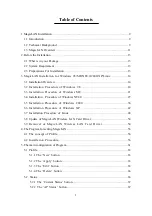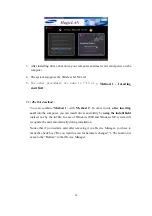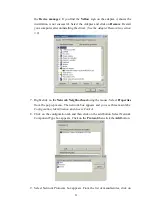
9
1. MagicLAN Installation
1.1 Introduction
Thank you for your purchase of SAMSUNG MagicLAN. Installing this cards allow the
computer to join a wireless network based on the IEEE 802.11b (High Data Rate) WLAN
standard. You will be surprised how easy for you are a part of the network with no bother of
twisted cables.
1.2 Technical Background
•
What is IEEE 802.11?
The IEEE 802.11 specification is a wireless LAN standard developed by the IEEE (Institute
of Electrical and Electronic Engineering) committee in order to specify an
over an air
interface between a wireless client and a base station or Access Point (AP), as well as
among wireless clients. Like other IEEE 802 families, IEEE 802.11 specification addresses
both Physical (PHY) layer and Media Access Control (MAC) layer.
•
IEEE 802.11 Physical (PHY) Layer
At the PHY layer, IEEE 802.11 defines three physical characteristics for WLAN: diffused
infrared, direct sequence spread spectrum (DSSS), and frequency hopping spread spectrum
(FHSS). While the infrared PHY operates at the baseband, the other two PHYs operate at
the 2.4GHz ISM (Industrial, Scientific, and Medical) band, which can be used for operating
wireless LAN devices without the need of end-user licenses. In order for wireless devices to
be interoperable, they have to be conforming to the same PHY standard.
•
IEEE 802.11 Media Access Control (MAC) Layer
The IEEE 802.11 MAC Layer is mainly concerned with the rules for accessing the wireless
medium. There are two network architectures defined: Ad-hoc Network and Infrastructure
Network.
•
Ad-hoc Network
Ad-hoc Network is an architecture that supports mutual communication among wireless
clients only. Since Ad-hoc Network does not support access to wired networks, it does not
need an Access Point to be a part of the network. You can use the network immediately
after setting up the operating mode by installing the supplied network driver.










































